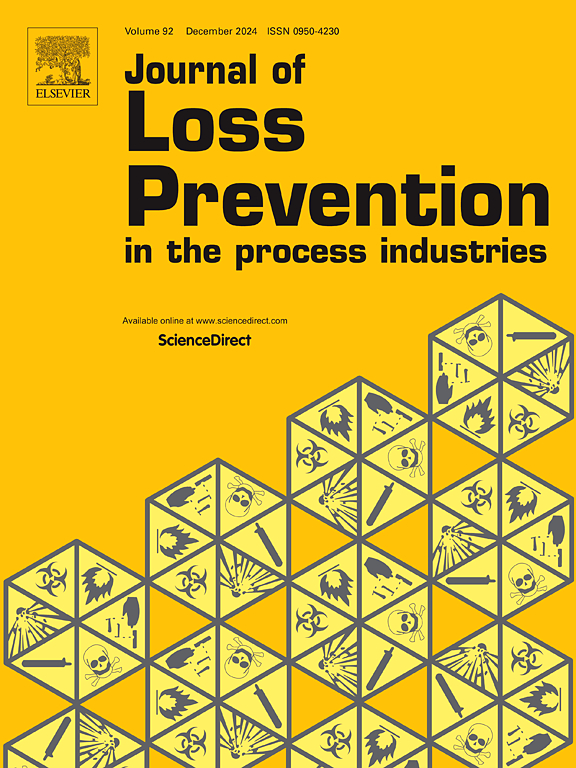STheBaN - System-Theoretic Bayesian approach for the evaluation of inspections workability in hydrogen operations
IF 3.6
3区 工程技术
Q2 ENGINEERING, CHEMICAL
Journal of Loss Prevention in The Process Industries
Pub Date : 2025-05-22
DOI:10.1016/j.jlp.2025.105687
引用次数: 0
Abstract
The demand for hydrogen is expected to grow significantly in the coming years. Despite its versatility and sustainability, hydrogen presents notable safety concerns due to its flammability, ignitability, and tendency to leak and embrittle metallic materials. To ensure the reliability of hydrogen technologies, regular inspection activities are essential. However, standards for designing, operating, and inspecting these components are still under development. Additionally, the complexity of the human-machine couplings involved can compromise the success of an inspection. In this context, this study proposes an innovative methodology to evaluate how human, technical, and environmental factors impact the workability of hydrogen inspections operations. The methodology combines the System-Theoretic Accident Model and Processes (STAMP) and Bayesian Networks to assess the complexity of human performance during acoustic emission testing of hydrogen storage tanks. Unlike traditional sequential methods, this approach employs STAMP to structure a Bayesian Network, enabling a comprehensive understanding of operator-process interactions. Prior probabilities, derived from Human Reliability Analysis, are incorporated into the Bayesian Network, facilitating quantitative assessments of inspection success probabilities. The study reveals that tasks may become unsafe under conditions that adversely affect the quality of the inspection. Furthermore, the operating environment, experience of operators, and their safety attitudes are critical for successful inspections. The adaptability of this methodology makes it a valuable tool for assessing human performance in their operations within complex socio-technical systems and safety-critical applications.
基于系统理论的贝叶斯方法评价氢气操作中检测的可操作性
预计未来几年对氢的需求将显著增长。尽管氢具有多功能性和可持续性,但由于其可燃性、可燃性以及泄漏和脆化金属材料的倾向,氢提出了值得注意的安全问题。为了确保氢技术的可靠性,定期的检查活动是必不可少的。然而,设计、操作和检查这些组件的标准仍在开发中。此外,所涉及的人机耦合的复杂性可能会影响检查的成功。在此背景下,本研究提出了一种创新的方法来评估人力、技术和环境因素如何影响氢气检测操作的可操作性。该方法结合了系统理论事故模型和过程(STAMP)和贝叶斯网络来评估储氢罐声发射测试过程中人类行为的复杂性。与传统的顺序方法不同,该方法使用STAMP来构建贝叶斯网络,从而能够全面理解操作符-过程的交互。先验概率,源自人类可靠性分析,被纳入贝叶斯网络,便于定量评估检查成功概率。研究表明,在不利影响检查质量的条件下,任务可能变得不安全。此外,操作环境、操作人员的经验和他们的安全态度对成功检查至关重要。这种方法的适应性使其成为在复杂的社会技术系统和安全关键应用中评估人类操作绩效的有价值的工具。
本文章由计算机程序翻译,如有差异,请以英文原文为准。
求助全文
约1分钟内获得全文
求助全文
来源期刊
CiteScore
7.20
自引率
14.30%
发文量
226
审稿时长
52 days
期刊介绍:
The broad scope of the journal is process safety. Process safety is defined as the prevention and mitigation of process-related injuries and damage arising from process incidents involving fire, explosion and toxic release. Such undesired events occur in the process industries during the use, storage, manufacture, handling, and transportation of highly hazardous chemicals.

 求助内容:
求助内容: 应助结果提醒方式:
应助结果提醒方式:


